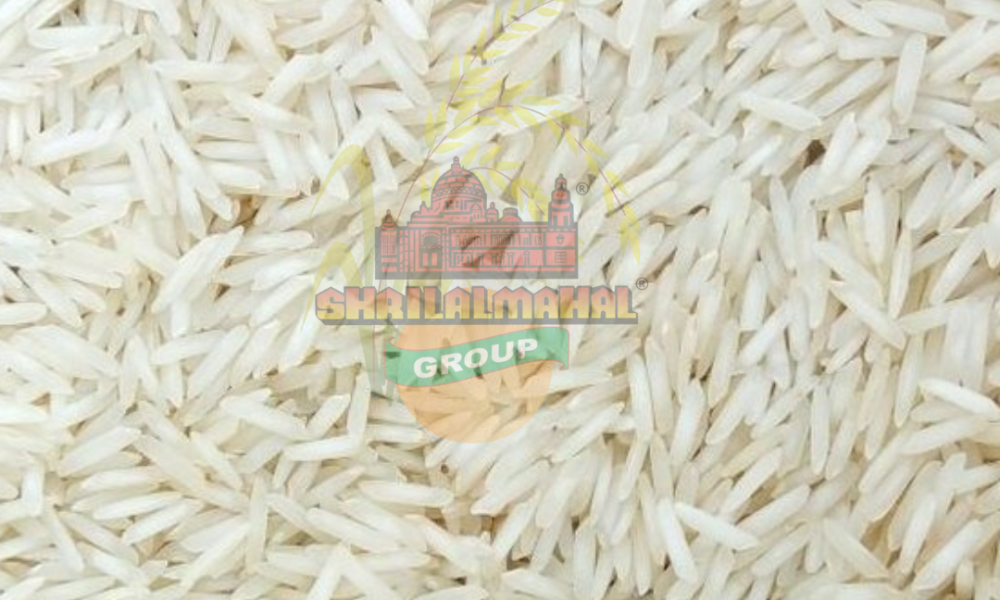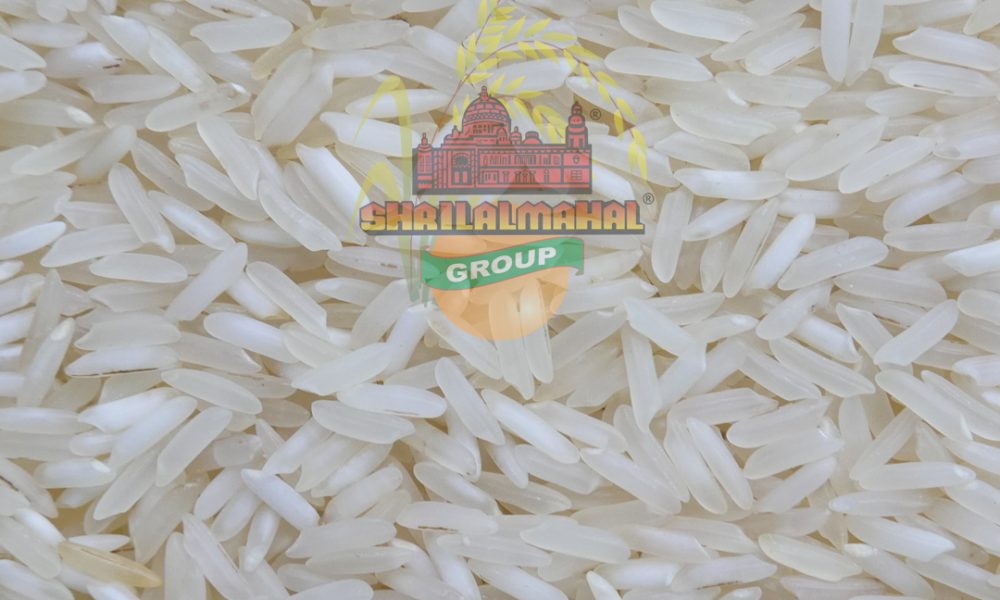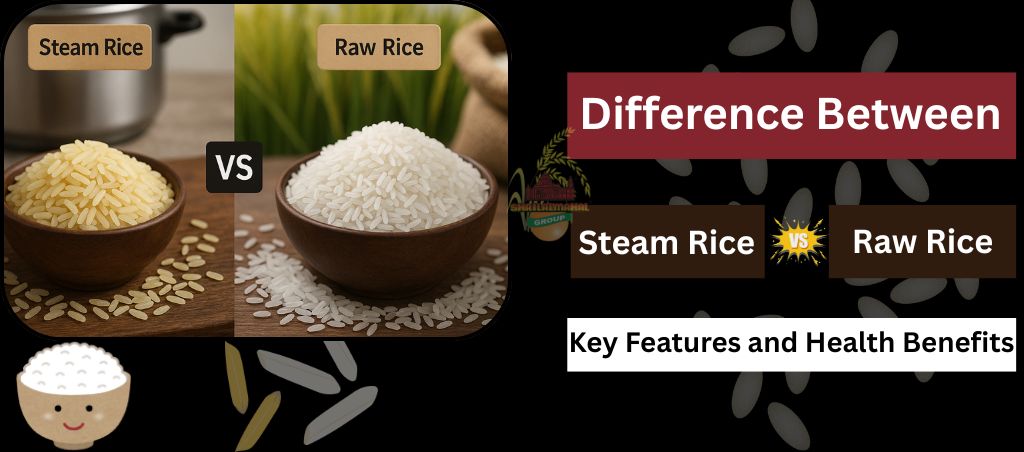For centuries, rice has been the most important part of Indian meal. Whether it is a festival or a mundane day, rice delicacies like Biryani, Pulaav, etc. are served to make the day more special for everyone. However, no matter the days and the occasion one thing which is very common is the variety of rice that is served in every plate. Basmati rice, one of the most popular types of rice has carved a niche for itself which is different from other rice varieties and is globally popular for its delightful aroma and unique taste.
The high demand and popularity of Indian basmati rice across the globe validate this fact. For centuries, rice exporters in India have been exporting high-quality steam and raw rice globally. Though people enjoy both the steam and raw rice, very few know about the differences between steam rice vs. raw rice. In this blog we will discuss about the two categories of basmati rice, steam and raw rice. These two categories are popular for extra-long slender grains but have different specifications.
Quick Difference Between Steam Rice and Raw Rice:
| Feature | Steam Rice | Raw Rice |
|---|---|---|
| Processing | Soaked, steamed, and dried | Directly milled after drying |
| Appearance | Slightly golden | Bright white |
| Cooking Time | Takes longer to cook | Cooks faster |
| Texture | Firm and separate | Soft and sometimes sticky |
What is Steam Rice?
Before we know about the differences in raw vs steam rice, it is important to find out what exactly is steam rice. Steam rice is one of the most popular types of rice which is cooked though partially during the milling process. It is treated with special methods that first involves soaking of unhusked rice (paddy), then it passes through the process of steam, and it is finally dried before it goes for milling process. The steaming process hardens the grain making it easier to mill and increase the shelf life.
Key Features of Steam Rice
Sona masoori raw vs steam rice are the two types of rice that is exported in large quantities by rice exporters in India and is famous for their health benefits and distinct features. However, steam rice possesses more features than raw rice which are as follows:
- Golden in Colour
- It has longer shelf life than the raw rice
- It is non-sticky and becomes firmer after cooking
- It retains more nutrients from the husk that means it is recommended by health experts as well
What is Raw Rice?
Raw rice is directly milled after harvesting and drying and does not undergo a parboiling or steaming process. Due to this it remains in a white, polished appearance. It is the most traditional form of rice that is easily available in households and widely used for several culinary purposes.
Key Features of Raw Rice
- Since it does not undergo any process before milling, it retains its original pure white colour
- Softer in texture after cooking
- Cooks faster than steam rice
- Slightly shorter shelf life
Health Benefits of Raw Rice
Health Benefits of Raw Rice are as follows:
- Natural Taste and Aroma: Raw rice unlike other types of rice is not pre-treated, which helps it retain natural fragrance and aroma. It is ideal for making flavourful dishes that is enjoyed at different occasions.
- Rich in Antioxidants: Raw rice is a rich source of antioxidants that helps in fighting free radicals in the body.
- Suitable for Fermentation: It is commonly used in making fermented rice dishes, which promote gut health.
- Lighter Texture: Raw rice, when cooked, tends to have a softer and lighter texture, making it a preferred choice in many traditional dishes.
To conclude, Raw rice is a good source of nutrients that includes fiber, minerals, and vitamins. It contains fiber that is good for digestive health still it cannot provide the same level of health benefits that steamed rice can. Steamed vs raw rice are the two different popular varieties of rice that undergo different processes and differ in their qualities and taste.


Steamed Vs Raw Rice- Nutritional Comparison & Other Differences
The table listed below will help you find the major differences between steam and raw rice:
Nutritional Comparison:
| Nutritional Value (100 gms) | Steamed Rice | Raw Rice |
|---|---|---|
| Calories | 130 kcal | 370 kcal |
| Carbohydrates | 28 gm | 80 gms |
| Protein | 2.5 gm | 7 gm |
| Fiber | 0.5 gm | 0.4 gm |
| Fat | < 0.5 gm | < 1 gm |
Steamed rice is widely used by masses since the nutrition in it is not reduced even after cooking or washing. Let us read in detail about the health benefits of raw and steam rice and how they differ:
Digestibility: Steamed rice whether boiled or cooked is usually easier to digest. Raw rice is less digestible in comparison to steam rice due to the presence of resistant starch and the bran layer. Presence of carbohydrates in steamed rice makes it easy to absorb whereas the resistant starches found in raw rice resist digestion in the small intestine.
Energy Release: Parboiled rice provides instant energy as it is already cooked, whereas raw rice contains only intact starches and fiber which releases energy but comparatively slow.
Cooking Process:As the name suggests, steamed rice is partially cooked before advancing the same to the milling process. Its partially cooked nature is one of major differences in steam vs raw rice, as raw rice is taken from the paddy without partially cooking. This results in more time to cook.
Raw Rice Vs. Steam Rice which is Good for Health
Both varieties of rice are effectively good for health and recommended by experts for consumption in moderate amount and as part of a balanced diet plan. Steamed rice is more preferrable than the raw rice as it helps in smooth digestion and has low anti-nutrients since it is already cooked. It contains comparatively higher amounts of vitamins, minerals, and fiber with enhanced absorption of mineral. Raw rice has only low fiber content, which contributes to promoting good digestive health control. It also helps to increase the bowel movements.
Sona Masoori Steam Rice vs Raw Rice
Sona Masoori is a non-basmati rice variety popular for its health benefits and rich aroma. Sona Masoori rice is normally available in two types: Sona Masoori Steam Rice and Raw Rice. Through this blog we will also help you find about the key differences in Sona Masoori Steam rice vs raw rice and reasons behind their popularity.
Sona Masoori raw rice is milled directly after harvesting whereas steam rice undergoes the process of steaming before milling. The steaming process in steam rice also known as parboiled rice helps retain nutrients and gives a less sticky texture upon cooking.
Conclusion
When compared steam rice vs raw rice, both have their unique characteristics. Comparison of both the variety of rice depends on what the consumer is looking for – taste, nutrition, texture, or convenience. Shri Lal Mahal is one of the leading rice exporters in India with a proven track record of exporting best qualities of basmati and non-basmati rice. Knowing the differences between the different varieties of rice will help you make better decisions based upon your requirements.
Frequently Asked Questions About Steam Rice vs Raw Rice
Steam rice is generally recommended for people having diabetes. Parboiled rice has a lower glycaemic index in comparison to the other rice varieties. Lower glycaemic index helps in controlling blood sugar levels.
Sona Masoori steam rice is a lightweight, aromatic medium sized -grain rice popular in South India. This variety of rice is partially cooked during processing, making it easier to digest and quicker to cook.
Yes, steam rice retains more nutrients due to the parboiling process.
Absolutely in moderation, steamed rice can be part of a healthy diet.
Steam rice usually has a slightly golden or off-white colour and a firmer texture.

Sona Masoori Rice Benefits, Price & Everything You Need to Know


